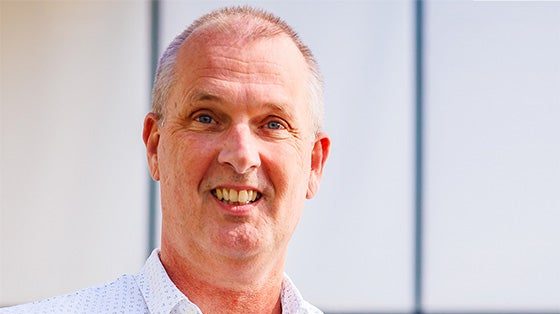Prof. dr. Marcel Kool has been appointed professor of Childhood brain tumors at UMC Utrecht. With his professorship, he aims to accelerate developments in precision medicine: ‘Together we can ensure that knowledge from the lab is translated more quickly into clinical studies for the children who stand to benefit the most.’
Every year, around 180 children in the Netherlands are diagnosed with a brain tumor. About half of these children have a tumor that is difficult to treat. For them, a cure is unlikely or impossible. Marcel Kool, research group leader at the Princess Máxima Center: ‘There are many different kinds of brain tumors in children, much more than in adults. All forms are rare or even very rare. The big challenge is to find effective treatments for all these types of tumours.’
In recent years, Kool’s research has resulted in a more complete understanding of the different forms of brain tumors in children. ‘This has led to much better classification and stratification – a division based on molecular and genetic differences, and on how well the tumor responds to a particular treatment, also known as precision medicine. We have made progress on this front for most brain tumors in children. And we are still finding new rare brain tumors that were not previously recognized as a separate subtype.’
Marcel Kool started his career at the Agricultural University in Wageningen, where he obtained his PhD in the field of viruses in insects. The medical field attracted him more, so he made the switch to the Netherlands Cancer Institute. Kool first came into contact with childhood cancer at the Academic Medical Center (AMC), where, as a research group leader, he focused on genetic changes in brain tumors. In 2011 he moved to Heidelberg in Germany to conduct research into brain tumors in children at the German Cancer Research Center DKFZ and later also at the Hopp-KiTZ Pediatric Tumor Center. Since 2019 he divides his time between the Hopp-KiTZ and the Princess Máxima Center. At the Máxima he leads a second research group with the same focus. Kool also plays an important role in the twinning program between the two institutes.
With the research in his groups in Heidelberg and the Máxima, Kool hopes to gain a better understanding of embryonic brain tumors such as medulloblastomas and ATRTs in particular, but also ependymomas and other, more recently discovered types of brain tumors. ‘We look at molecular changes in the tumors, and at genetics and epigenetics: differences in the DNA and its control. This gives us a good picture of possible targets for medicines.’
Research into the biology of childhood brain tumors and finding new and better treatments requires many good models in the lab, says Kool. ‘We are working on such models with a large international group of colleagues. For example, organoids, a kind of 3D mini-tumors that we can grow in the lab, and mouse models in which we can study tissue from children with a brain tumor. We try to mimic the many rare types of brain tumors as closely as possible in the lab. We can then use those models to test whether promising targeted drugs do indeed work well, and which tumors respond to the drug. This allows us to pick out the most effective treatment for each type of brain tumor.’
With his professorship, Kool aims to put research into childhood brain tumors at the Máxima, in collaboration with UMC Utrecht and Hopp-KiTZ, on the map internationally. ‘Together we can ensure that knowledge from the lab is translated more quickly into clinical studies, so that we can give specific medicines or drug combinations to the children who stand to benefit the most.’
Children with a high-grade brain tumor have a small chance of surviving their disease. But Kool is also looking for improvements for children for whom the treatment does work. ‘Most of the current treatments cause a lot of damage to healthy tissue. As a result, children who survive their brain tumor often suffer from serious side effects throughout their lives. And in children whose tumor comes back after treatment, almost every treatment we give now is ineffective. We need to improve treatment for childhood brain tumors on all levels.’
Compared to other forms of childhood cancer, children with a brain tumor have a poor outcome from their disease. Nevertheless, Kool sees that a lot has already changed during his career, thanks in part to contributions from his own research groups. ‘Now it is important to translate the biological insights we have gained into better and less harmful treatments.’
